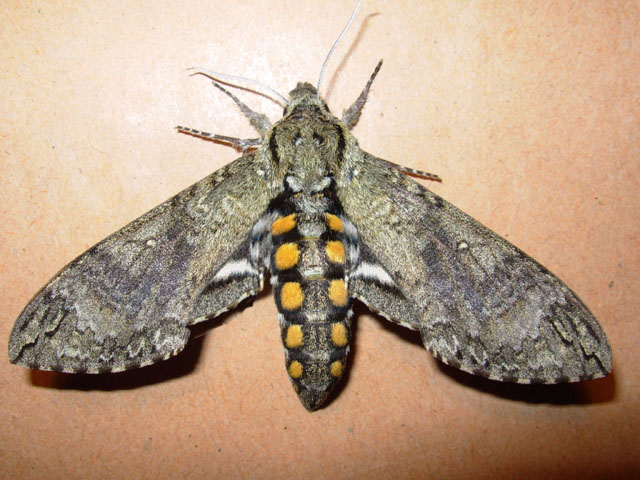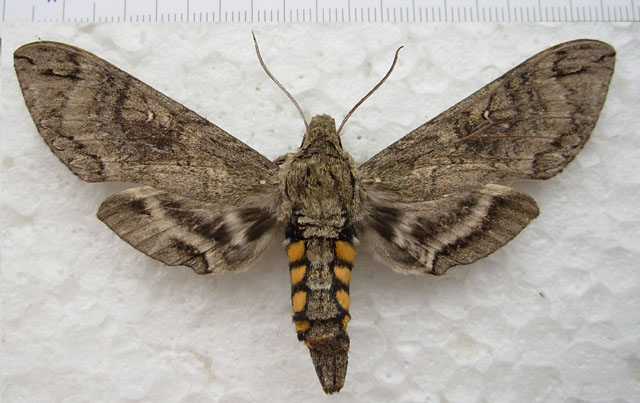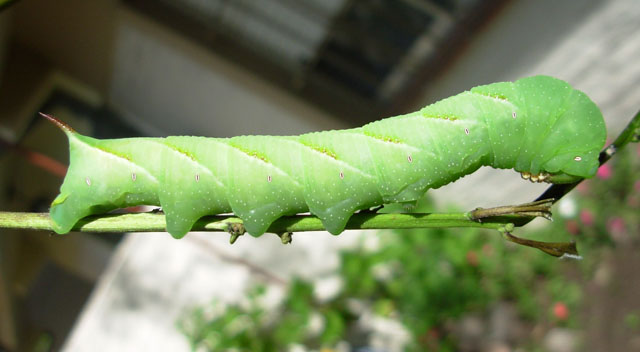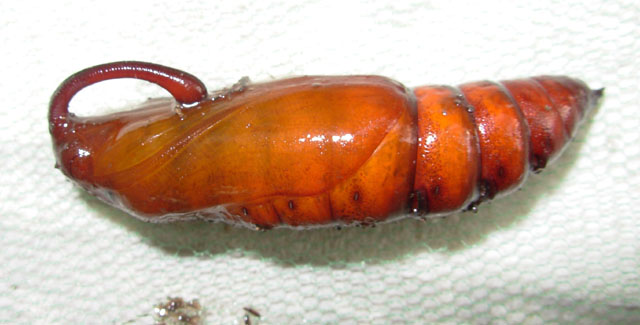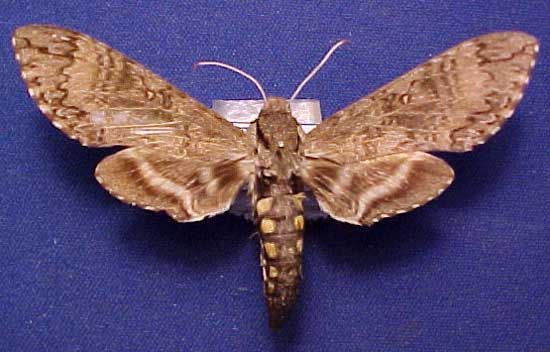Ian Kitching writes, "At present (October 2007), the subspecies situation in Manduca diffissa is rather confused.
"Manduca diffissa diffissa is a small grey subspecies from SE Argentina and Uruguay. It might be a separate/distinct species?
Rothschild & Jordan listed M. d. diffissa from Paraguay but I suspect these would be better placed as M. d. petuniae
(though I have not checked closely).
"Manduca diffissa petuniae is generally (but not always) a pale brown form from SE Brazil as far north as Minas Gerais (and probably
in the Iguazu, Argentina area).
"Manduca diffissa tropicalis is a larger, darker form from Minas Gerais to Colombia. However, to quote R&J: 'The ground colour of the
forewing is, however, variable, some individuals being decidedly more russet than others, though not so pale as petuniae'."
"Manduca diffissa mesosa is a form from Salta and Tucuman in northern Argentina (and probably southern Bolivia) that is
intermediate between tropicalis and petuniae(!).
"Manduca diffissa zischkai is a high altitude subspecies from Bolivia that may be a separate species.
"Manduca diffissa ssp in eastern Ecuador is decidedly greenish, and the distinction between this and Manduca mossi is
difficult to determine and is under study by Jean Haxaire (it was being studied by Jean-Marie Cadiou and me until his untimely passing).
"I doubt that the distinction between mesosa, petuniae and tropicalis will hold, but maybe DNA barcoding will suggest how things should be organized."
Due to weak am line, and quite pale area along inner margin, I (Bill Oehlke) feel the above specimen is more likely Manduca diffissa diffissa.
